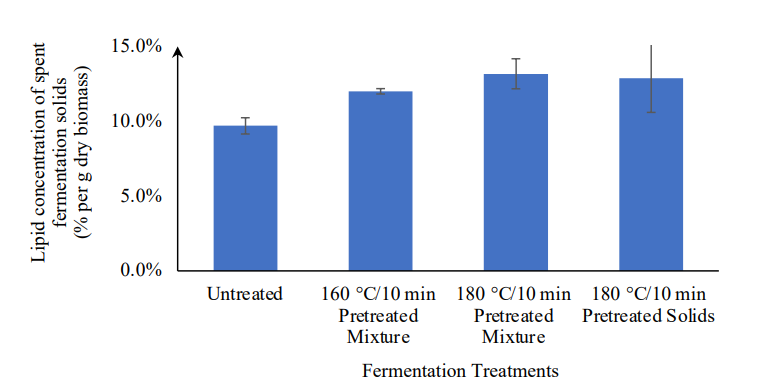Coprocessing Corn Germ Meal for Oil Recovery and Ethanol Production: A Process Model for Lipid-Producing Energy Crops
Themes: Conversion
Keywords: Hydrolysate, Lipidomics
Citation
Jia, Y., Kumar, D., Winkler-Moser, J.K., Dien, B., Rausch, K., Tumbleson, M.E., Singh. V. March 29, 2022. “Coprocessing Corn Germ Meal for Oil Recovery and Ethanol Production: A Process Model for Lipid-Producing Energy Crops.” Processes 10:661. DOI: 10.3390/pr10040661.
Overview

Efforts to engineer high-productivity crops to accumulate oils in their vegetative tissue present the possibility of expanding biodiesel production. However, processing the new crops for lipid recovery and ethanol production from cell wall saccharides is challenging and expensive. In a previous study using corn germ meal as a model substrate, we reported that liquid hot water (LHW) pretreatment enriched the lipid concentration by 2.2 to 4.2 fold. This study investigated combining oil recovery with ethanol production by extracting oil following LHW and simultaneous saccharification and co-fermentation (SSCF) of the biomass. Corn germ meal was again used to model the oil-bearing energy crops. Pretreated germ meal hydrolysate or solids (160 °C and 180 °C for 10 minutes) were fermented, and lipids were extracted from both the spent fermentation whole broth and fermentation solids, which were recovered by centrifugation and convective drying. Lipid contents in spent fermentation solids increased 3.7 to 5.7 fold compared to the beginning germ meal. The highest lipid yield achieved after fermentation was 36.0 mg lipid g−1 raw biomass; the maximum relative amount of triacylglycerol (TAG) was 50.9% of extracted oil. Although the fermentation step increased the lipid concentration of the recovered solids, it did not improve the lipid yields of pretreated biomass and detrimentally affected oil compositions by increasing the relative concentrations of free fatty acids.
Data
Download (7.2 KB) includes:
- Sugar Concentrations
- Ethanol Conversion Efficiency
- Lipid Yields/Concentrations